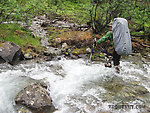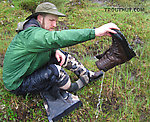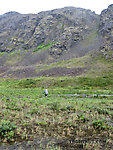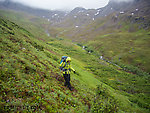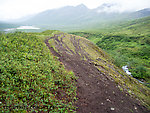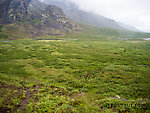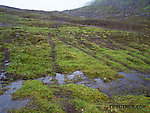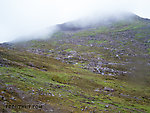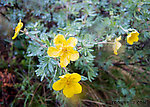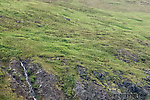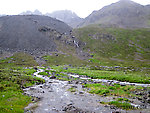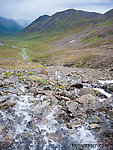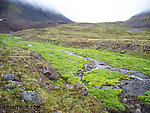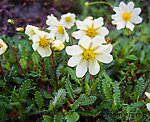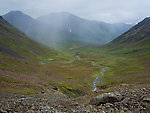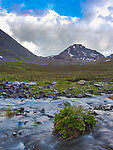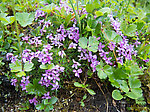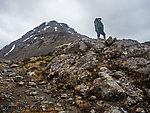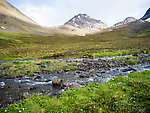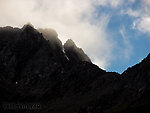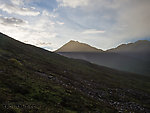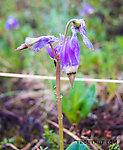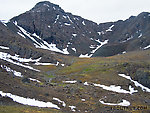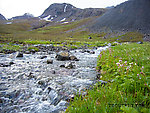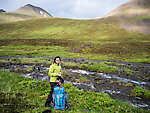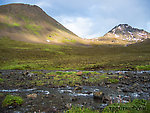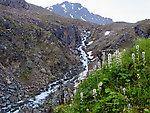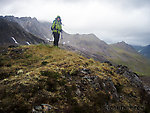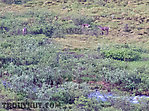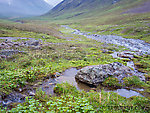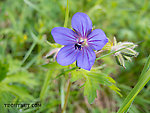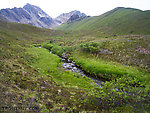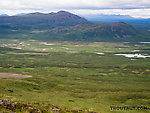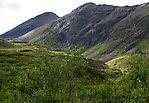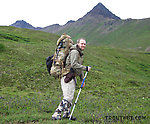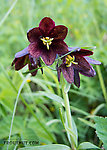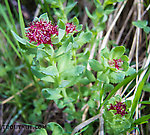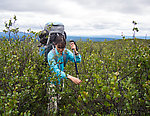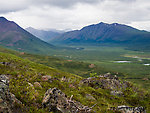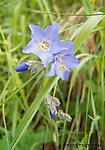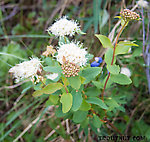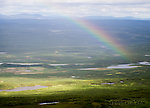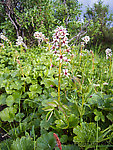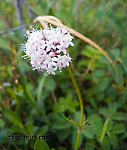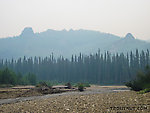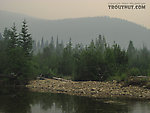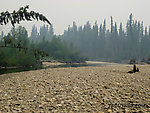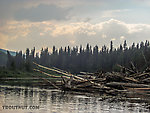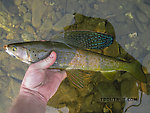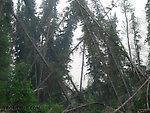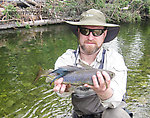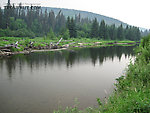Blog & Latest Updates
Fly Fishing Articles
Insects by Common Name


Latest updates, page 38
Hike in the Clearwater Mountains in the Alaska Range (Day 3 of 4)
Our third day hiking was wet and cold all the way through. The temperature was in the forties (Fahrenheit) and the cold drizzle didn't stop all day. We had decent raingear, but it's impossible to keep everything dry in this weather. My wife Lena didn't have waterproof boots, so her feet got soaked, and I ended up with water sloshing around in my boots after ferrying her and all our stuff across an unexpectedly rain-swollen creek. We had long since given up on our original plan to complete the hike in three days, and covered plenty of ground on day three just to make a four-day finish viable.
Photos by Troutnut from Clearwater Mountains in Alaska
Hike in the Clearwater Mountains in the Alaska Range (Day 2 of 4)
We got a late start to day two because we were tired and it was raining all morning and early afternoon. We began around 3:45 pm and made our way up over one pass and down the next drainage to the ridge before the next pass. We were able to break camp during a brief pause in the rain, but we went through the pass amidst howling winds and small hail. Later in the evening, the weather cleared enough for a bit of sunshine.
The only wildlife we saw were Arctic ground squirrels and a cow caribou with two calves.
The only wildlife we saw were Arctic ground squirrels and a cow caribou with two calves.
Photos by Troutnut from Clearwater Mountains and the South Fork of Pass Creek in Alaska
Hike in the Clearwater Mountains in the Alaska Range (Day 1 of 4)
My wife and I took the July 4th weekend to do a 19-mile hike through some pretty, remote country off the Denali Highway in the Alaska Range. Except for the last few hundred yards, the only trails were the ones left by caribou and moose.
Photos by Troutnut from Clearwater Mountains and Clearwater Creek in Alaska
Updates from July 5, 2013
Photos by Troutnut from Denali Highway and the Delta River in Alaska
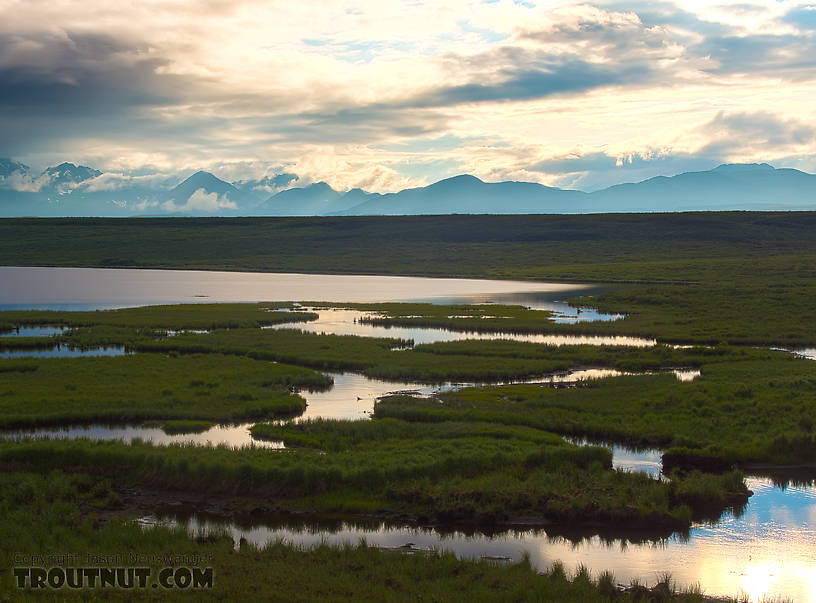
This was one of our first views of the mountains we'd be hiking into, seen from across some lakes in the upper Osar Creek drainage.
StateAlaska
LocationDenali Highway
Date TakenJul 5, 2013
Date AddedJul 14, 2013
AuthorTroutnut
CameraNikon Coolpix P7700
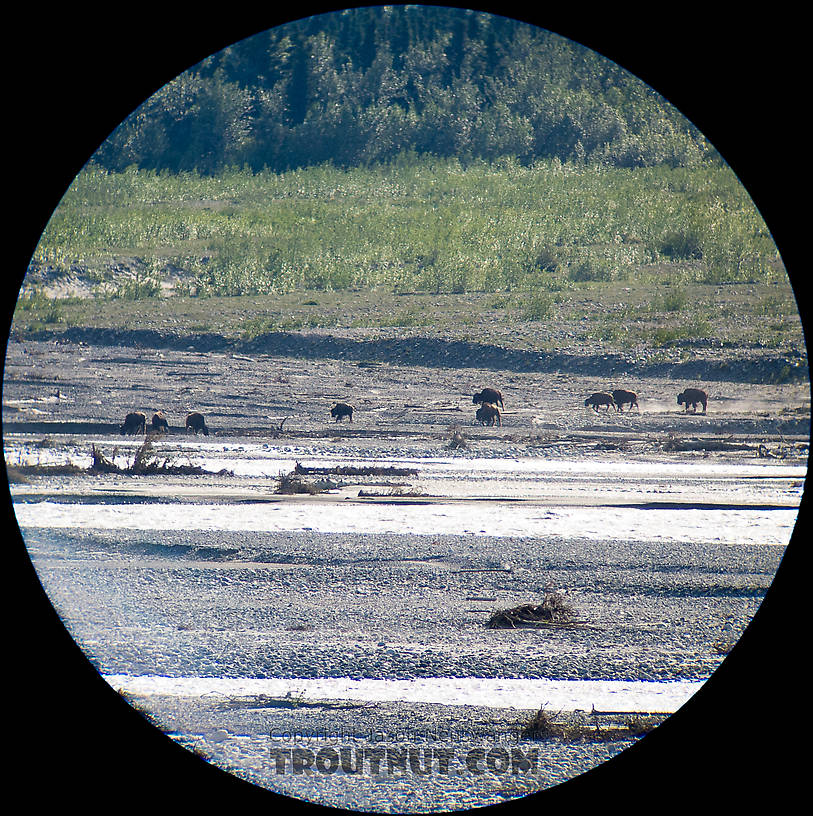
Every time I drive past the Delta River overlooks on the Richardson Highway southwest of Fairbanks, I look for the wild bison that supposedly calve in that area. I've never seen them until this trip, when a few dozen were milling around out in the open valley next to the big glacial river. I snapped this picture through my spotting scope.
StateAlaska
LocationDelta River
Date TakenJul 5, 2013
Date AddedJul 14, 2013
AuthorTroutnut
CameraNikon Coolpix P7700
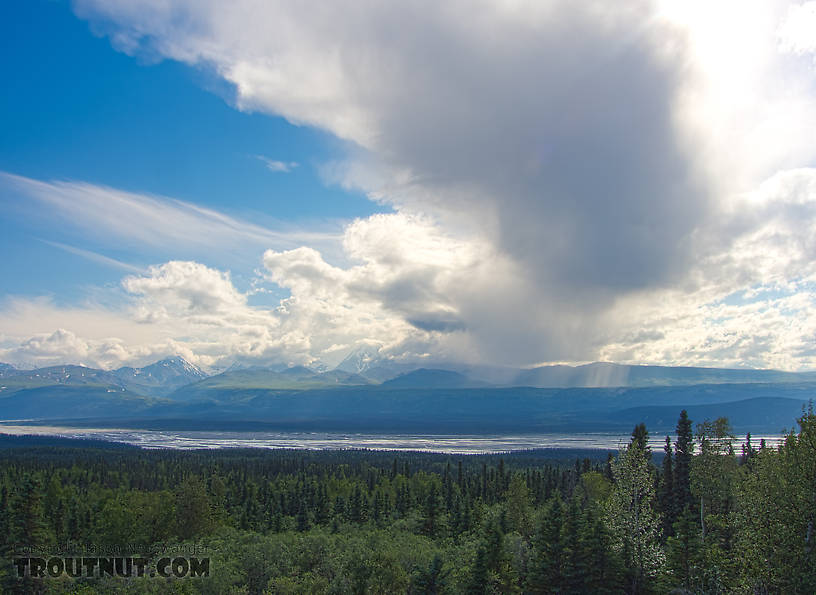
StateAlaska
LocationDelta River
Date TakenJul 5, 2013
Date AddedJul 14, 2013
AuthorTroutnut
CameraNikon Coolpix P7700
Catch & release smoked grayling on the Chena
I recently spent (Spent: The wing position of many aquatic insects when they fall on the water after mating. The wings of both sides lay flat on the water. The word may be used to describe insects with their wings in that position, as well as the position itself.) a day up the Chena fishing for grayling and teaching a vacationing wildlife biologist how to fly fish. She became proficient quickly and caught her first grayling in a pool by the road during casting lessons. We then bushwhacked into some out-of-the-way spots where we both caught many fish.
Throughout the day the Chena valley was shrouded in smoke from the 30,000-acre Stuart Creek #2 forest fire burning about 7 miles south of the river. The same drought that fueled the fire had the river lower than it ever gets in most years. This made for easy wading and excellent grayling fishing, because the lower water concentrates the fish in even more predictable places than usual.
Trout often become more wary and choosy under such conditions, and the grayling were showing signs of those symptoms too. They were still grayling, however, and accommodating their whims meant switching from my gaudiest attractor (Attractor: Flies not designed to imitate any particular insect, but to incorporate characteristics attractive to trout. When trout aren't feeding selectively, attractors often outperform careful imitations as searching patterns because they are easier to see and incorporate more strike-triggering characteristics. They include legends like the Adams, Bivisible, and Royal Wulff.) fly to something a little more subtle... not downsizing to a size 22 midge pupa as one might be forced to do for spring creek trout.
At one point, I had several nice grayling in a 5-foot stretch of a current seam rising every second or two, a rare sight on any Alaskan river where hatches are typically sparse. I drifted my size 14 royal doublewing (a LaFontaine creation sort of like a royal trude, and a dynamite grayling fly) over them a dozen times, drawing a few looks but no takes. Might I actually have to match a hatch to catch grayling? I saw nothing emerging and their rise forms said "spinner fall" (or something like it), so I tied on a size 16 Galloup's cripple (Cripple: In fly fishing, a cripple is any insect which has been injured or deformed so that it cannot escape the water. This may include stillborn emergers or fully emerged adults which have been damaged, often by wind or waves, so that they can no longer fly. Trout often favor eating crippled insects.) (basically a rusty spinner with one wing and a crooked body). I caught six nice grayling on six solid takes in about six casts.
Hatch-matching for grayling apparently angered the thunder gods, who responded to my success with a bright flash and a boom that rumbled back and forth between the nearby mountains for several seconds. The surprise lightning right above us chased us off the water and back to the car via a half-mile hike through a tamarack bog criss-crossed with fragmented moose trails. We reached the car just as the drizzle turned to a downpour.
The nice thing about Alaska's 24/7 summer sun is that when weather interferes with your plans "midday," you can look at the clock and realize it's actually already mid-evening. Rather than wait out the storm and fish until the "oops, it's midnight already?" moment, we headed back to town for a burger, smelling of smoked DEET... just another day in Fairbanks!
Throughout the day the Chena valley was shrouded in smoke from the 30,000-acre Stuart Creek #2 forest fire burning about 7 miles south of the river. The same drought that fueled the fire had the river lower than it ever gets in most years. This made for easy wading and excellent grayling fishing, because the lower water concentrates the fish in even more predictable places than usual.
Trout often become more wary and choosy under such conditions, and the grayling were showing signs of those symptoms too. They were still grayling, however, and accommodating their whims meant switching from my gaudiest attractor (Attractor: Flies not designed to imitate any particular insect, but to incorporate characteristics attractive to trout. When trout aren't feeding selectively, attractors often outperform careful imitations as searching patterns because they are easier to see and incorporate more strike-triggering characteristics. They include legends like the Adams, Bivisible, and Royal Wulff.) fly to something a little more subtle... not downsizing to a size 22 midge pupa as one might be forced to do for spring creek trout.
At one point, I had several nice grayling in a 5-foot stretch of a current seam rising every second or two, a rare sight on any Alaskan river where hatches are typically sparse. I drifted my size 14 royal doublewing (a LaFontaine creation sort of like a royal trude, and a dynamite grayling fly) over them a dozen times, drawing a few looks but no takes. Might I actually have to match a hatch to catch grayling? I saw nothing emerging and their rise forms said "spinner fall" (or something like it), so I tied on a size 16 Galloup's cripple (Cripple: In fly fishing, a cripple is any insect which has been injured or deformed so that it cannot escape the water. This may include stillborn emergers or fully emerged adults which have been damaged, often by wind or waves, so that they can no longer fly. Trout often favor eating crippled insects.) (basically a rusty spinner with one wing and a crooked body). I caught six nice grayling on six solid takes in about six casts.
Hatch-matching for grayling apparently angered the thunder gods, who responded to my success with a bright flash and a boom that rumbled back and forth between the nearby mountains for several seconds. The surprise lightning right above us chased us off the water and back to the car via a half-mile hike through a tamarack bog criss-crossed with fragmented moose trails. We reached the car just as the drizzle turned to a downpour.
The nice thing about Alaska's 24/7 summer sun is that when weather interferes with your plans "midday," you can look at the clock and realize it's actually already mid-evening. Rather than wait out the storm and fish until the "oops, it's midnight already?" moment, we headed back to town for a burger, smelling of smoked DEET... just another day in Fairbanks!
Photos by Troutnut from the Chena River in Alaska
Top 10 Fly Hatches
Top Gift Shop Designs
Eat mayflies.
Top Insect Specimens
Miscellaneous Sites
Troutnut.com is copyright © 2004-2024 Jason
Neuswanger (email Jason). See my FAQ for information about use of my images.
 privacy policy
privacy policy

